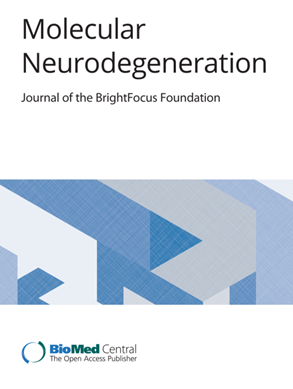Myelin dysfunction in aging and brain disorders: mechanisms and therapeutic opportunities.
IF 17.5
1区 医学
Q1 NEUROSCIENCES
引用次数: 0
Abstract
Myelin is a multilamellar membrane that surrounds axons in the vertebrate nervous system. Properly functioning myelin is essential for the rapid conduction of nerve impulses, and it metabolically supports axonal integrity. Emerging evidence indicates that myelin is also involved in various aspects of cognition, with adaptive myelination playing a critical role in memory consolidation and motor learning. However, these physiological processes can be disrupted in various diseases. Understanding the mechanisms underlying myelin pathology is therefore essential for the development of targeted therapies for associated medical conditions. This review provides a comprehensive overview of the role of myelin in neural function, with a particular focus on adaptive myelination in cognition. We also highlight myelin dysfunction and the underlying mechanisms in the aging brain, as well as in diverse brain disorders and neurological conditions, including neurodegenerative diseases, psychiatric conditions, brain injuries, chemotherapy-related cognitive impairment, and neurological symptoms associated with COVID-19. Furthermore, we discuss the therapeutic potential of recently identified pro-myelinating compounds in aging-associated cognitive decline and brain disorders, as well as the future of remyelination therapies. Current evidence suggests that restoring functional myelin may serve as a therapeutic strategy for various medical conditions associated with myelin dysfunction.髓磷脂功能障碍在衰老和脑部疾病:机制和治疗机会。
髓鞘是脊椎动物神经系统中包裹轴突的多层膜。正常运作的髓磷脂对于神经冲动的快速传导是必不可少的,它在代谢上支持轴突的完整性。新出现的证据表明,髓磷脂还参与认知的各个方面,适应性髓鞘形成在记忆巩固和运动学习中起着关键作用。然而,这些生理过程可能在各种疾病中被破坏。因此,了解髓磷脂病理机制对于开发针对相关疾病的靶向治疗至关重要。这篇综述提供了髓磷脂在神经功能中的作用的全面概述,特别关注认知中的适应性髓鞘形成。我们还强调髓磷脂功能障碍及其在大脑老化中的潜在机制,以及各种脑部疾病和神经系统疾病中的潜在机制,包括神经退行性疾病、精神疾病、脑损伤、化疗相关认知障碍和与COVID-19相关的神经系统症状。此外,我们讨论了最近发现的促髓鞘生成化合物在与衰老相关的认知能力下降和脑部疾病中的治疗潜力,以及髓鞘再生治疗的未来。目前的证据表明,恢复髓磷脂功能可以作为一种治疗策略,用于治疗与髓磷脂功能障碍相关的各种疾病。
本文章由计算机程序翻译,如有差异,请以英文原文为准。
求助全文
约1分钟内获得全文
求助全文
来源期刊

Molecular Neurodegeneration
医学-神经科学
CiteScore
23.00
自引率
4.60%
发文量
78
审稿时长
6-12 weeks
期刊介绍:
Molecular Neurodegeneration, an open-access, peer-reviewed journal, comprehensively covers neurodegeneration research at the molecular and cellular levels.
Neurodegenerative diseases, such as Alzheimer's, Parkinson's, Huntington's, and prion diseases, fall under its purview. These disorders, often linked to advanced aging and characterized by varying degrees of dementia, pose a significant public health concern with the growing aging population. Recent strides in understanding the molecular and cellular mechanisms of these neurodegenerative disorders offer valuable insights into their pathogenesis.
 求助内容:
求助内容: 应助结果提醒方式:
应助结果提醒方式:


